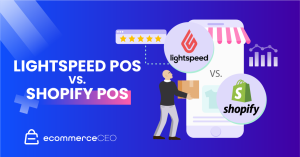
The holidays are fast approaching and brands and retailers of all sizes are busy with last-minute preparations. To help sellers prepare for the season ahead, we decided to highlight some advice from our Managed Services experts in a Q&A blog series. Read the first blog in this series: E-Commerce Marketplace Best Practices for the Holidays.
The ChannelAdvisor Managed Services team works with clients every day to provide strategy and execution in their e-commerce efforts — maximizing their presence on marketplaces and optimizing their digital marketing campaigns.
We sat down with Jennifer Doyle, one of our client strategy directors for digital marketing, to get some of her strategy tips for the upcoming holiday season.
Q: It’s September. What are the three most urgent things advertisers should be doing right now before the holidays?
At this point, initial holiday discussions ideally would have taken place and the primary tasks involve confirming your goals and ensuring your campaigns are prepared and your website is ready for the upcoming seasonal demand. I also recommend the following actions:
- Finalize investment and goals. Review budgets and performance from last year. Map out daily and weekly spending — do you expect the same spend pattern? Were there areas of opportunity last year like ramping up earlier, investing more on key sale dates or ensuring you have enough budget throughout the season to capture demand of last-minute shoppers?
- Check product feed health. Resolve any errors or disapprovals in Google Merchant Center. If there are products that are disapproved for reasons you are unable to control, remove the SKU to prevent potential for any sudden account warnings or suspension.
- Map out strategies and have a contingency plan. “Define your campaign strategies going into the season but have a contingency plan in place to be ready to pivot if needed. The overall macro environment is quite uncertain heading into this holiday so you need to be ready to adjust based on consumer behavior. What campaign types will you be using and are they the same as last year? Review your automated bid strategies and have a plan in place to adjust budgets and ROAS targets gradually to capture additional opportunities. What happens if you aren’t seeing the traffic or performance as planned? One example that we have seen is clients setting ROAS targets lower in Google but then having to pivot to maximize conversion value without a ROAS target to get more traffic during peak days.”
Q: How should marketers approach their ad budget when looking ahead to the Cyber Five and beyond?
Advertisers should not only look year-over-year but also at the trends for the year in their accounts. With drawbacks such as the pandemic and the current economic climate, comparisons to last year are more challenging, as consumer behavior has changed. We recommend visualizing your data in charts for the last 12 months with various metrics. Have cost-per-clicks (CPCs) consistently risen over the last few months? Ensure you are realistic in your budget planning to account for those increased costs and the additional competition this year. Utilize Google Auction Insights to see metrics like impression share and overlap rate and see how competition trends have changed since last holiday season.
Most importantly, ensure your budgets align with your promotional calendar when conversion rates are at their peak — and properly fund campaigns for the demand after Cyber Five.
Q: Brands and retailers hear a lot about getting products “in front of the right consumer, at the right place, at the right time.” What does that look like from a specific strategy/tactic perspective?
This can vary depending on the channel you are running ads on, but the key here is knowing your audience and leveraging automation to its full potential. Ensure your customer lists are up to date and take advantage of Google’s seasonal in-market segment lists, like online Black Friday shopping and after-Christmas sale shopping.
Leverage Google’s most advanced machine learning by using Performance Max campaigns. Performance Max campaigns allow you to unlock new audiences across Google’s channels and networks. By unifying all of Google’s ad inventory in one place and having a shared goal, Google is able to serve ads most efficiently by having the path-to-purchase data in one place. Performance Max campaign type is the preferred Google Shopping campaign type and is designed to be complementary to search, display and video — not to replace them.
Q: What are the best ways to highlight promotions throughout the season?
Taking advantage of Google’s standard extensions like sitelinks and callouts to highlight promotions is imperative but don’t forget about promotion extensions. Google has special occasions listed as options that will appear in your extension text automatically in bold followed by your specific offer.
Running Google Merchant promotions is another important way to highlight offers. Ensure your feed is also set up to provide the regular price and sale price attributes. This way, Google will know the product is on sale and will automatically show this to the consumer by using a sale annotation and by striking through the regular price to highlight the sale price.
Q: Which ad types do you recommend for advertisers to promote products across Google, Facebook and Instagram? Does it change by vertical?
On Google, the primary ad types are Dynamic Search Ads and Responsive Search Ads for paid search, Shopping Ads and Local Inventory Ads for Google Shopping and Discovery Ads for image-based display ads. As mentioned above, Performance Max campaigns are the latest and most advanced Google campaign that combines search, display and video ads in one central campaign. If you are currently running Smart Shopping campaigns, be aware that the campaigns will auto-migrate to Performance Max campaigns by the end of September.
On YouTube, video action campaigns are what we recommend for advertisers. These campaigns combine inventory in one campaign and allow advertisers to drive more conversions while still optimizing to the lowest cost per action (CPA).
On Facebook, most advertisers are primarily leveraging Dynamic Ads to promote the most relevant items and ensure pricing and availability is up to date by utilizing their product feed data. On Instagram, advertisers are seeing success with Instagram Shopping Ads.
In terms of what campaign types to leverage, it is typically best to determine your strategy based on your goals. Are you looking for more awareness and reach or are you only interested in driving sales? Most advertisers fall in between so it is a matter of utilizing a combination of ad types and aligning bid strategies to reach your goals. The mix of ad types can certainly also vary by vertical. For some products, consumers are more brand-agnostic than others, so more upper funnel tactics might be needed. Other industries like apparel see the most success when their products and pricing are shown such as on Google Shopping and Dynamic Ads on Facebook.
Q: Anything else brands and retailers should be thinking about?
According to Google, 2021 saw more sales outside of Cyber Week than in previous years. It is important to lean into bidding automation and be flexible to best compete throughout the entire holiday season. For advertisers with brick-and-mortar stores, understanding how your campaigns can drive both offline and online revenue as well as the various strategies that you can leverage to reach omnichannel goals should be a key priority. Most advertisers with brick-and-mortar locations have omnichannel strategies in place such as increasing visibility of Local Inventory Ads after their last ship date.
Overall, remaining flexible this holiday is critical, as consumers continue to experience uncertainty due to macroeconomic factors like supply chain disruptions and rising inflation. But with early preparation and active management during the season, you can ensure you are set up to have the most successful holiday season possible!
If you’re interested in learning more about how our Managed Services team can help you prepare for this holiday season, contact us today.
Stay tuned for the final blog in this series coming soon.


